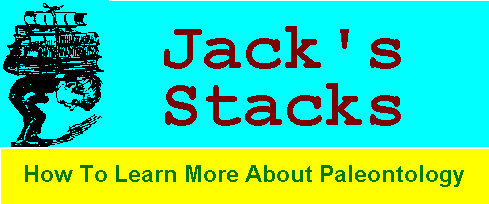
Trilobites in Words and Pictures - by a Physicist!

A number of my reviews have had dinosaur themes as it should be, this being the year of Jurassic Park and all, but what of the lowly invertebrate? Better still, what of the intriguing trilobite, so dear to many of the Dry Dredgers? To answer this unasked question, we'll look at Trilobites, by Riccardo Levi- Setti, second edition, Chicago University Press, 1993.
Originally published in 1975, it has been revised and updated for this edition. The hardcover volume will set you back $45.00. The 1975 first edition can be found in used book stores for a lot less but it is a different book altogether.
The author is not a professional paleontologist but a physicist. Not just a physicist, but the director of the Enrico Fermi Institute at the University of Chicago. So why did a physicist write a book on trilobites? Just like many of the Dredgers, he is fascinated by them.
The book is directed toward the amateur collector and trilobite fancier although it will probably be enjoyed by many professionals as well. The first three chapters are introductory in nature dealing with arthropods in general, trilobite morphology, vision, enrollment, and life habits. Levi-Setti's physics specialty is optics and he has authored and co-authored a number of papers on trilobite eyes. He spends considerable time with the vision systems of trilobites and presents some of his relatively recent work within this section.
These descriptive sections are moderately technical in nature but are kept very basic for the intended audience. For those desiring more detailed knowledge, the author repeatedly refers the reader to The Treatise. For the most part, technical terms are defined in context and anatomical features illustrated with text figures. My one complaint about the book, considering the intended amateur audience, is that undefined technical terminology occasionally slips into the text or photo captions. In my opinion, if the book is truly for amateurs, all terms used should be defined, either within the text or through a glossary of terms.
Two thirds of this 300 plus page book is the author's photographic atlas of trilobites. A number of pages are devoted to describing the photographic techniques used for the plates. Rather than stick to the upper left hand light source requirement for professional paleontologic presentations, Levi-Setti uses the eye and thoughts of a photographer to use whatever lighting method best illustrates the fossil. All of the photographs are in vivid black and white.
The photographs are indeed well done. If you own or have seen the first edition, you'll still want to see the second for the addition of the more recently discovered trilobites. A number of expertly airbrasive prepared spiny specimens are shown such as: Philonyx, Psychopyge, Dicranurus, Ceratonurus, and Leonaspis. The Dry Dredgers own Dan Cooper is credited with collecting the Isotelus illustrated. The two Flexicalymene pictured from this area were not the best specimens by any means. Not every trilobite known to man is pictured either. As the author explains, the specimens shown were those he could gain access to through museums or private collectors. Not all are complete pristine specimens - I remember one plate showed only an assemblage of pygidia.
Besides the more standard photographs you might expect, a number of X-ray photographs are included. The specimens are from the famous Beecher trilobite beds of New York which contained Triarthrus eatoni with pyritized soft parts. This book probably has more of these than have been seen in the popular literature before.
The author owns up to an organizational problem in the first edition which he has corrected in this one. He had made the misjudgment of grouping the photos in a newly proposed classification scheme he had discussed with Dr. Jan Bergström. It seems that when Dr. Bergström's classification was subjected to peer review, it was not widely accepted. So as not to be stuck again, Levi-Setti decided to group the photo section by geologic age beginning with the oldest. In addition, he is careful not to discuss taxonomic relationships above the family level for similar reasons.
All in all I'd have to say that Trilobites will be especially liked by trilobite fanatics. Even people like me who will pick a trilobite up if it is in the way of a crinoid will enjoy it. Since my biggest reason for book buying and reading is learning, I think that Trilobites is adequate in this regard even though two thirds of the book is pictures.